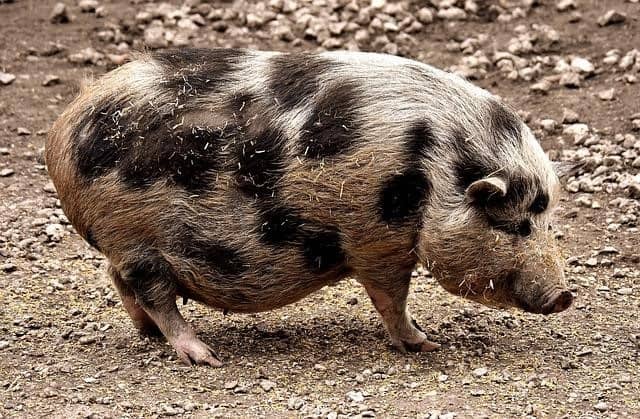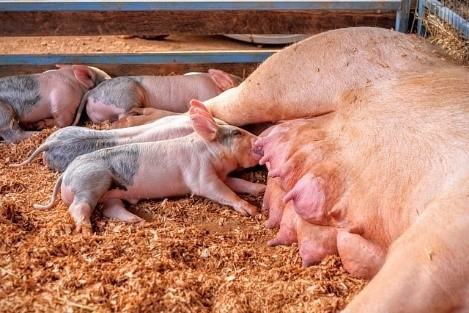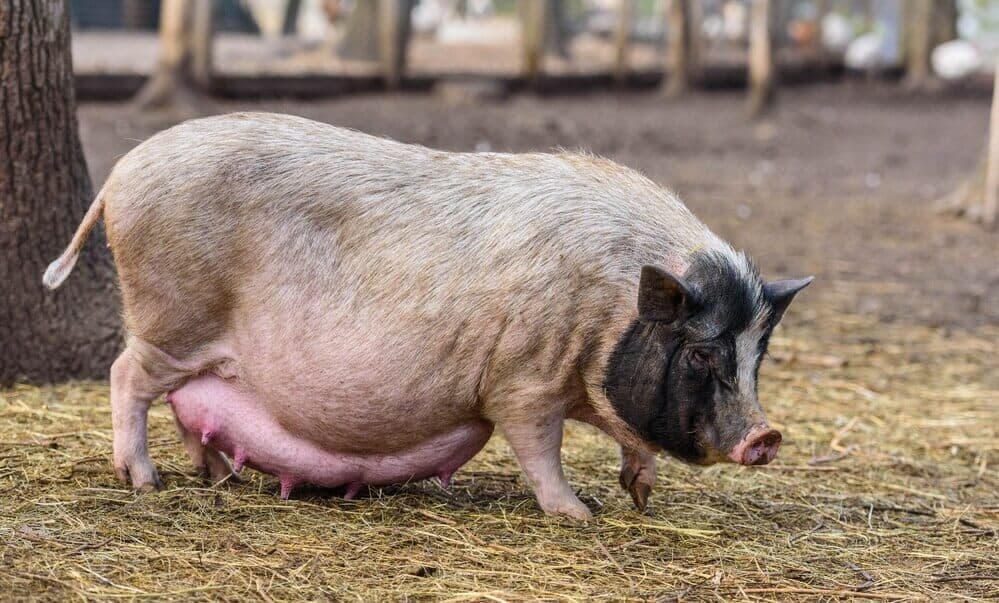A pregnant pig requires special treatment in terms of food, housing, and overall handling. During pregnancy, the sow’s health has a huge impact on the health of the piglets she will give birth to. This special care requires the creation of capacity that can only be accurately provided if you can estimate the gestation period. Learn how long are pigs pregnant and what this means for your farm.
Knowing the duration of your pigs’ pregnancy cycles also means you can anticipate when the piglets will show up so you will be ready to receive them. Lack of preparation might lead to loss of the young oinkers to environmental elements like chilly weather, accidental deaths like the sow lying on her own offspring, unforeseen predators, and in extreme cases, (which are rare but shouldn’t be risked) pigs eating their piglets.
How Long Are Pigs Pregnant?
The typical pregnancy period of the female pig is 114 days from the date of service, which can be either through artificial insemination or mating. This translates to three months, three weeks, and three days. The actual recorded gestation periods for pigs range from 111 to 120 days, though, and any number of days within this range is still considered normal.
When it comes to how to breed pigs, the birthing process (also referred to as farrowing) should be classified as abortion if it happens before 109 days. It is considered premature farrowing if it takes between 109 and 112 days.
The variations in the length of pregnancy can be attributed to many factors, including the environment, age, a specific breed of pigs, or the time of year. Gilts – female pigs that have never given birth before or are expecting their first litter – and pigs with larger liters tend to have a shorter gestation period.
Pigs are highly prolific, and when in good health, a sow will breed two litters per year. You can even get three liters within 365 days, however, that is not recommended. Their litter rate oscillates between seven and 14 piglets per litter for each pig. This makes all the care and special treatment worth it in the end.
The sow will be ready for the next breeding cycle five to seven days after her piglets have been weaned (removed from nursing). Weaning is done when the piglets are three weeks old (21 days), so the pig should come into estrus (heat) again 26 to 28 days after farrowing (giving birth).
If the sows are healthy, they will come in heat in a timely manner, and you will have no trouble getting them pregnant whenever they are ripe for pregnancy. Therefore, they should be fed well on a balanced diet to keep them strong and capable.
How Can You Tell If Pigs Are Pregnant?

Pregnant sows require special treatment because the hormonal changes will affect their temperament towards their handlers and other pigs. Their overall health during pregnancy also reflects on the health of the piglets they birth and their ability to survive the birthing process. Therefore, it is vital to be able to tell when they are pregnant so that they are handled with care from the onset.
There are several signs from which you can deduce that the pig is pregnant before you perform an actual test. The pregnant sow will behave differently from the rest of the drove even before she starts exhibiting physical signs of pregnancy. You should be aware of these behavioral and physical developments if you are to optimize the breeding environment.
Changes in the Estrous Cycle
Female pigs in most species become sexually mature between five and six months of age, after which they will go into heat every 21 days or three weeks. This is what is referred to as the estrous cycle. The period of fertility lasts between eight and 36 hours.
An experienced handler is familiar with their pig’s estrous cycles. They should also be equipped with estrous detection skills to instantly check if the gilts and sows are on heat. This should be done consistently to breed pigs because each female has their own unique estrous cycle.
A pregnant sow or gilt will not go into heat like they are supposed to every three weeks. There will be no signs of being in heat when you usually expect them. If you are handling a new drove or a pig whose estrous cycle you are unfamiliar with, count three weeks after mating or insemination and perform your estrous check.
Your sow or gilt will become notably disinterested in mating and even want to be as far away from the boars as possible. If you are using artificial insemination and there are no boars in the picture, you can observe other indicators of pigs on heat like swelling and reddening of the vulva. The absence of these signs could mean conception was successful.
Disruption of the estrous cycle is the first indicator that the pig is pregnant though it is not conclusive; the gilt or sow might lose interest in mating for other physical and psychological reasons. It should be supported by other indicators of pregnancy.
Increased Appetite
An increase in appetite may not be evident in the initial stages of pregnancy. As the farrowing date approaches, there is an increased demand for nutrition due to the developing piglets and the conversion of fats to milk. The fats need to be replaced somehow.
Food portions should be increased during this period, which is one of the reasons pregnant gilts or sows are often separated from the rest of the drove. Competing for food can be a stressor for the expectant pig, affecting the unborn piglets. Learn what do pigs eat and ensure that their diet is balanced so they can stay strong and healthy.
Increased Heart Rate
The physical and hormonal changes in the pig’s body lead to an acceleration of their heartbeat. You need to have been consistently checking your pigs’ vitals to tell the difference. Professional breeders know how to confirm gestation using the heart rate, and you can do it yourself with the right equipment. Your veterinarian can also check them out during their regular inspection rounds.

Swelling of the Teats and Stomach
These signs may not be apparent during the first two months of the pregnancy. The sow’s belly will gradually transform into a potbelly and sag downwards because of the weight of the piglets in the stomach. You can even see the piglets’ movement as they adjust their position in the stomach if you are keen enough.
The udders become reddish and swollen because milk production has begun, and they are readying themselves to nurture the troop that is about to be released into the world.
Be sure to provide comfortable shelter for all your livestock and especially pregnant and nursing sows. Building a barn or shed for animals
Perform a Pregnancy Test
You can perform a pig urine pregnancy test for sows 4 – 6 weeks after mating to determine a pregnancy diagnosis. The home tests are easy to perform and offer rapid detection and accurate results. You can buy a sow pregnancy tester test strip from Walmart, Amazon and other retailers that sell swine supplies.
This solution is always available if you are not sure that you are reading the signs right. Some of these indicators of pregnancy are also shared with symptoms of illness, so it is good to confirm when in doubt.
How Long are Pigs Pregnant For
Everyone who breeds pigs must have asked themselves how long are pigs pregnant at some point in their journey. They realize that pregnant pigs have to be fed, housed, and handled differently from the rest of the drove for the duration of the pregnancy.
They also appreciate the need to be there for the farrowing to mitigate the effects of any complications that may arise. The only way to be prepared for this is to know their gestation period.
Look for pregnancy signs in sows or use a test a month after your gilt or sow was served. This provides ample time for the pregnancy to have started showing, which justifies your purchase of the kit.
For most pig breeds, the typical healthy pig is pregnant for 114 days from the date of conception. Expect the piglets to be birthed within three days of this mark.
Learn more about raising pigs, difference between hog vs pig, and specific breeds of pigs:

